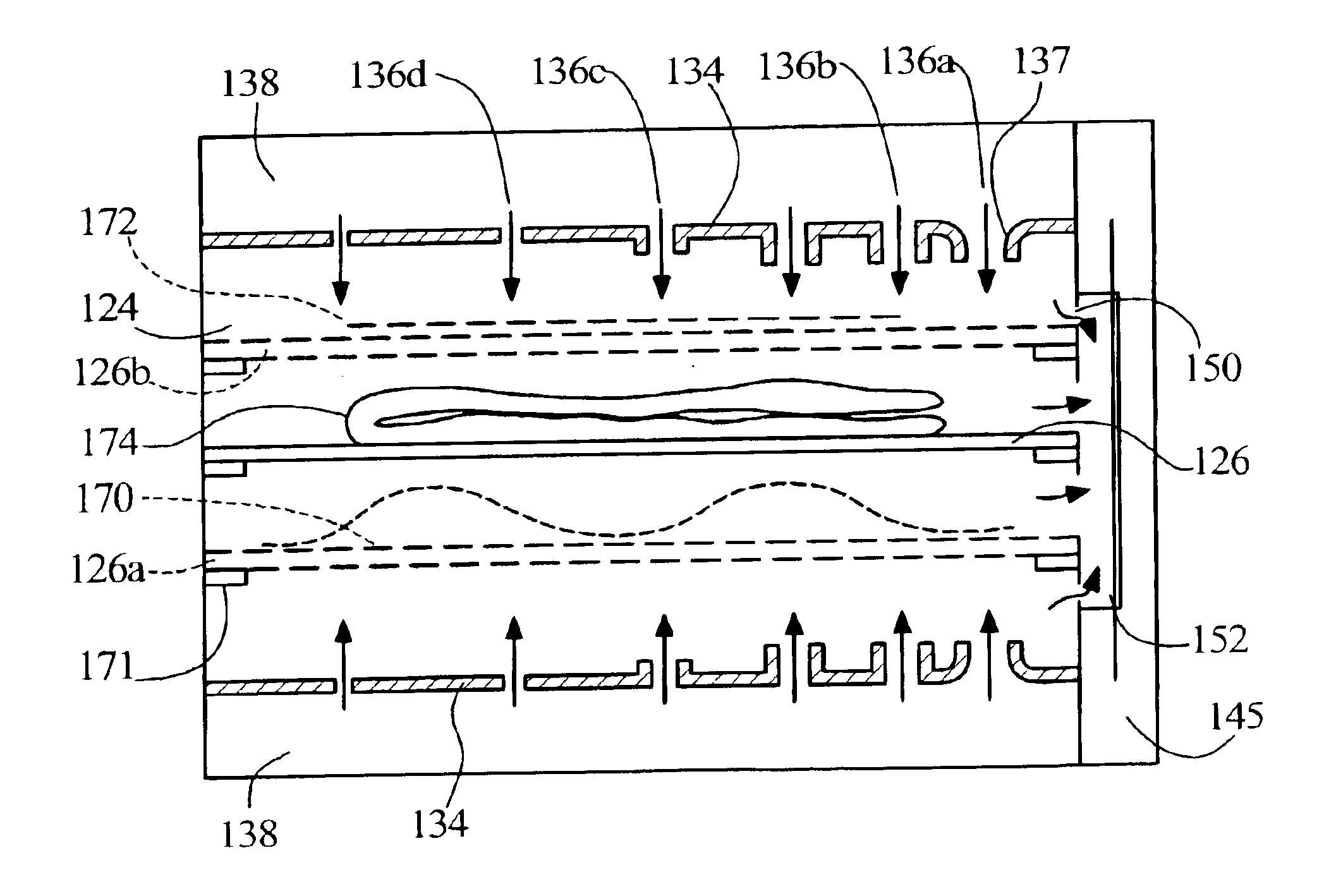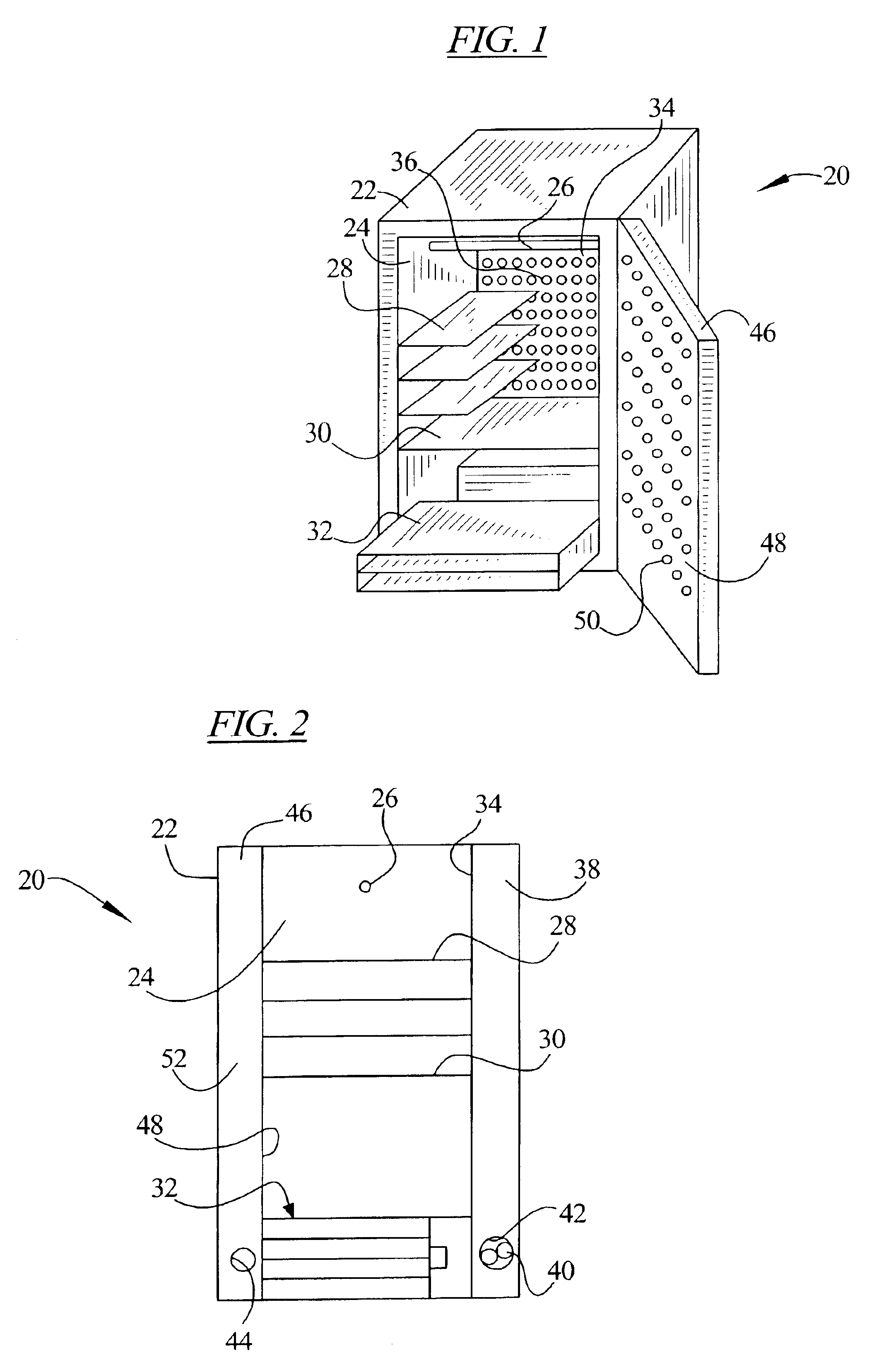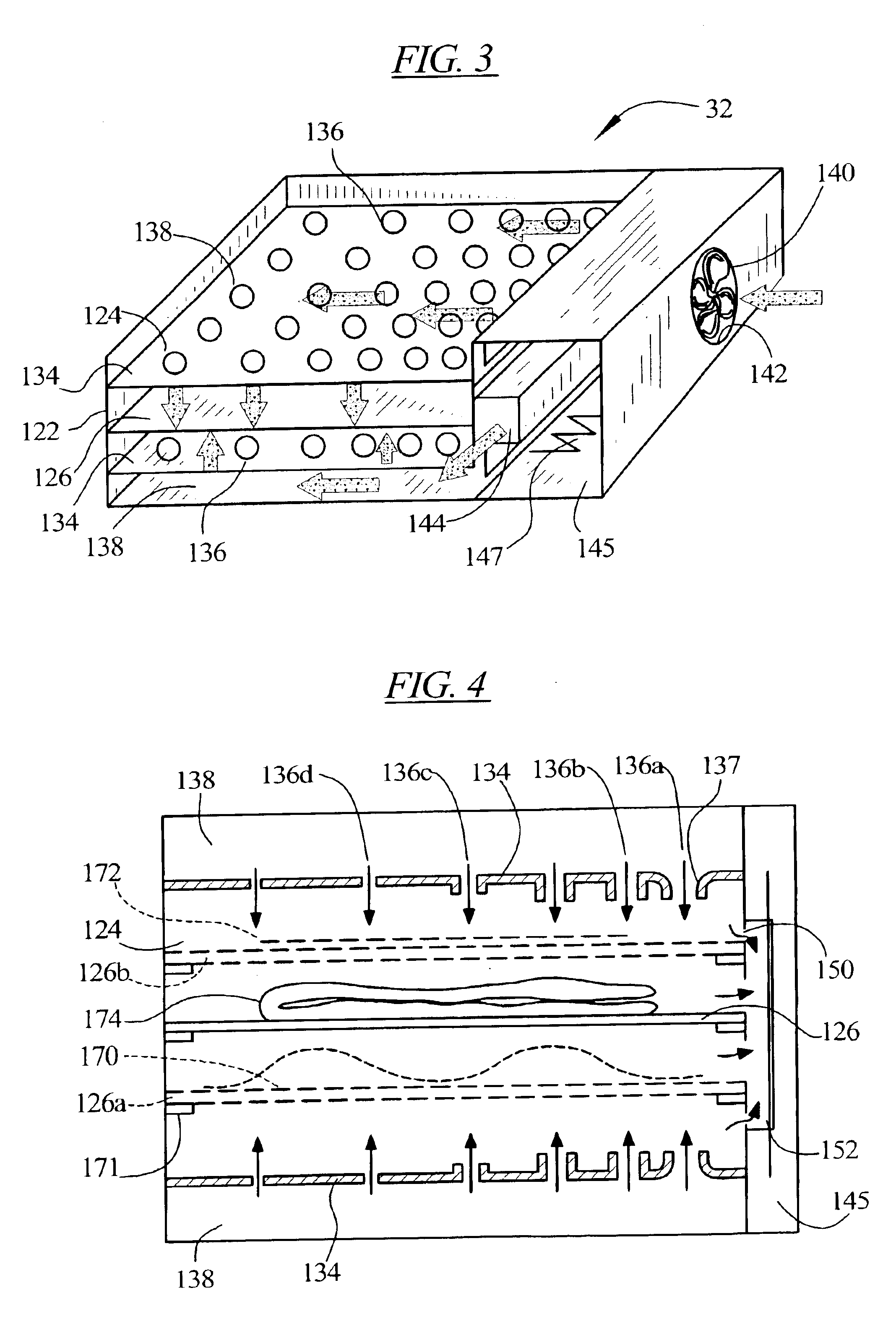Stationary clothes drying apparatus with jet nozzles
a drying apparatus and stationary technology, applied in the field of stationary drying, can solve the problems of limited mass transfer, increase in overall heat and mass transfer rate, etc., and achieve the effects of increasing heat transfer rate, enhancing and uniform heat transfer, and improving performance of stationary drying devices
- Summary
- Abstract
- Description
- Claims
- Application Information
AI Technical Summary
Benefits of technology
Problems solved by technology
Method used
Image
Examples
Embodiment Construction
A stationary dryer incorporating the principles of the present invention can be practiced in many different embodiments. Some of these embodiments are shown and described herein, however, the present invention is not limited to the particular embodiments contained in this description.
The term stationary dryer is meant to cover drying devices in which the articles to be dried remain relatively stationary during the drying process. The dryer itself may be movable to different locations and various components of the dryer may be movable, particularly when the articles to be dried are being placed into or removed from the dryer. While such a device could be used to dry a wide variety of articles, for the purposes of providing an enabling disclosure of the best mode of the invention, embodiments are described below for drying clothing or other fabric articles, however, the invention is not limited to such specific uses.
In FIG. 1 a stationary dryer which may be useful for drying clothes i...
PUM
 Login to View More
Login to View More Abstract
Description
Claims
Application Information
 Login to View More
Login to View More - R&D
- Intellectual Property
- Life Sciences
- Materials
- Tech Scout
- Unparalleled Data Quality
- Higher Quality Content
- 60% Fewer Hallucinations
Browse by: Latest US Patents, China's latest patents, Technical Efficacy Thesaurus, Application Domain, Technology Topic, Popular Technical Reports.
© 2025 PatSnap. All rights reserved.Legal|Privacy policy|Modern Slavery Act Transparency Statement|Sitemap|About US| Contact US: help@patsnap.com



